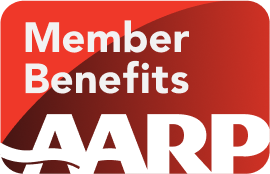AARP Hearing Center


Carrie Ann Inaba, 56, has been a judge on the popular Dancing With The Stars (DWTS) reality show for a staggering 32 seasons. “It takes me about a good month to recover from [the] stress [of the show],” she says. During her recovery period, Inaba, who suffers from chronic autoimmune disorders, is busy with her website Carrie Ann Conversations, which offers resources and support for people with similar health challenges. She shares how she’s adapted her workouts as she’s gotten older, her thoughts on aging and who she’d love to see compete on Season 33 of DWTS.
This interview has been edited for length and clarity.
Who would you love to see as a contestant on Dancing With the Stars?
I would love to see Craig Ferguson. … He’s got that frame that I think would make for an excellent dancer, but also he’s got humor. And I think that that does really well on Dancing With the Stars. I also think that it would be nice to see somebody like Britney Spears. ... I think dancing can be very empowering, especially for somebody like Britney, who has always used dance as a tool for her own wellness.
Is there another reality show you’d love to be a contestant on?
Special Forces: [World’s Toughest Test on Fox]. Something about that has always fascinated me. I would have loved to, when I was younger, do something like that. But now that I’m where I’m at, I know that it’s an impossible dream, because I can’t even leave the house without my heating pads. So it’s definitely a pipe dream, but that’s the show that I always watch and I go, “Oh, I wish I could do that.”
How have you adapted your workouts now that you are in your 50s?
Oh, I do much less intensive workouts. I used to do kickboxing and martial arts and dancing all the time. Because of the injuries in my neck — I have spinal stenosis — and from the autoimmune conditions and the fibromyalgia, I have changed it. Now I sit on a recumbent bike with my desk in front of me and I multitask. … I do a half an hour on the bike, or I do a half an hour on the treadmill, just walking. It doesn’t have to be so intense to give you the benefits. In fact, now I feel like I’m healthier than I’ve ever been, and I’m doing much-less-intensive workouts. I’m also doing Pilates, which is really important, because keeping flexible keeps you young. Keeping flexibility in your spine and making sure that everything stays open stops us from hunching over and starting to feel really old and rickety.































































More Celebrity Q&As
AARP Members Only Access Celebrity Interviews
Read exclusive interviews with the biggest names in Hollywood and TV, best-selling authors and more high-profile personalitiesPeter Bergman
Returning for his 35th year as Jack Abbott, ‘The Young and the Restless’ star shares Emmy memories, the skinny on his wardrobe, a favorite on-screen kissMandy Patinkin
Actor talks new show ‘Death and Other Details,’ road trips, time with his grandson and life advice; says ‘I love being alive, I love my family and I love the world’Tig Notaro
Comedian discusses famous friends, podcasting, raising twins, keeping healthy in her 50s and why she wants to live to be 115Recommended for You